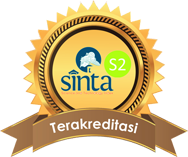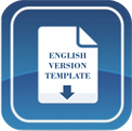Implementation of 8E Learning Cycle Model with Instagram to Overcome Student Misconceptions in Buffer Solution Material
DOI:
https://doi.org/10.15575/jtk.v7i2.20494Keywords:
buffer solution, learning cycle 8E model, misconceptionsAbstract
References
Arfianawati, S., Sudarmin, S., & Sumarni, W. (2016). Model pembelajaran kimia berbasis etnosains untuk meningkatkan kemampuan berpikir kritis siswa. Jurnal Pengajaran MIPA, 21(1), 46-51. https://doi.org/10.18269/jpmipa.v21i1.36256
Agustiyaningsih, S., & Azizah, U. (2019). Reduce Misconception of Students on Buffer. In National Seminar on Chemistry, 1(Snk), 239–245. https://doi.org/10.2991/snk-19.2019.51
A’yun, K., & Suyono. (2020). Hubungan tingkat Konflik Kognitif terhadap Beban Miskonsepsi Mahasiswa Calon Guru Kimia. Uniqbu Journal of Exact Sciences (UJES), 1(April), 41–45. https://doi.org/10.47323/ujes.v1i1.6
Bere, V. P., Pranata, K. B. P., & Jufriadi, A. (2019). Penerapan Model Pembelejaran Learning Cycle 5E Berbasis Eksperimen untuk Meningkatkan Pemahaman Konsep dan Mereduksi Miskonsepsi Siswa. Seminar Nasional Pendidikan, 152–157. Retrieved fromhttp://snpfmotogpe.ulm.ac.id/proceeding/index.php/snpf/article/view/64
Duch, W. (2017). Kurt Lewin, psychological constructs and sources of brain cognitive activity. arXiv preprint arXiv:1711.01767. https://doi.org/10.48550/arXiv.1711.01767
Fajriani, G. N., Sopandi, W., & Kadarohman, A. (2019). Miskonsepsi Siswa Yang Menggunakan Teks Perubahan Konseptual Mengenai Hukum-Hukum Dasar Kimia. Orbital: Jurnal Pendidikan Kimia, 3(1), 30–41. https://doi.org/10.19109/ojpk.v3i1.3361
Gurel, D. K., Eryilmaz, A., & McDermott, L. C. (2015). A review and comparison of diagnostic instruments to identify students’ misconceptions in science. Eurasia Journal of Mathematics, Science and Technology Education, 11(5), 989–1008. https://doi.org/10.12973/eurasia.2015.1369a
Jannah, M., Ningsih, P., & Ratman. (2017). Analisis Miskonsepsi Siswa Kelas Xi Sma Negeri 1 Banawa Tengah Pada Pembelajaran Larutan Penyangga Dengan CRI (Certainty of Response Index). Jurnal Akademika Kimia, 5(2), 86–90. Retrieved from http://jurnal.untad.ac.id/jurnal/index.php/JAK/article/view/8019
Kustiarini, F. T., VH, Efi. S., & Saputro, A. N. C. Penggunaan Tes Diagnostik Three-Tier Test Alasan Terbuka untuk Mengidentifikasi Miskonsepsi Larutan. Jurnal Pendidikan Kimia, 8(2), 171-178. https://doi.org/10.20961/jpkim.v8i2.25236
Maemanah, S., Suryaningsih, S., & Yunita, L. (2019). Kemampuan Pemecahan Masalah Melalui Model Flipped Classroom Pada Pembelajaran Kimia Abad Ke 21 Orbital. Orbital: Jurnal Pendidikan Kimia, 3(2). https://doi.org/10.19109/ojpk.v3i2.4901
Mushlihah, K., Yetri, & Tuberti. (2018). Pengembangan Media Pembelajaran Berbasis Multi Representasi Bermuatan Sains Keislaman Dengan Output Instagram Pada Materi Hukum Newton Development Learning Material Principle Multi Representasi Contain Sains Islam Religious with Instagram Output on Lesson Newton Law. Indnoseian Journal of Science and Mathematics Education, 01(3), 207–2015. https://ejournal.radenintan.ac.id/index.php/IJSME/index
Mustafa, L. K., & Suyanta. (2019). Exploring Students’ Integrated Ability and Creativity: Using 7e Learning Cycle Model in Chemistry Learning. Journal of Physics: Conference Series, 1233(1). https://doi.org/10.1088/1742-6596/1233/1/012019
Nasrudin, H., & Azizah, U. (2020). Overcoming Misconception in Energetic Topics Through Implementation of Metacognitive Skills-Based Instructional Materials: A Case Study In Student Of Chemistry Department, Universitas Negeri Surabaya. JPII, 9(1), 125–134. https://doi.org/10.15294/jpii.v9i1
Nurhidayatulah, N., & Prodjosantoso, A. K. (2018). Miskonsepsi materi larutan penyangga. Jurnal Inovasi Pendidikan IPA, 4(1), 41–51. https://doi.org/10.21831/jipi.v4i1.10029
Nurulwati, N., & Rahmadani, A. (2020). Perbandingan Hasil Diagnostik Miskonsepsi Menggunakan Threetier Dan Fourtier Diagnostic Test Pada Materi Gerak Lurus. Jurnal Pendidikan Sains Indonesia, 7(2), 101–110. https://doi.org/10.24815/jpsi.v7i2.14436
Pikoli, M. (2020). International Journal of Active Learning Using Guided Inquiry Learning with Multiple Representations to Reduce Misconceptions of Chemistry Teacher Candidates on Acid-Base Concept. International Journal of Active Learning, 5(1), 1–10. Retrieved from http://journal.unnes.ac.id/nju/index.php/ijal
Waseso, H. P. (2018). Kurikulum 2013 dalam prespektif teori pembelajaran konstruktivis. TA'LIM: Jurnal Studi Pendidikan Islam, 1(1), 59-72. https://doi.org/10.52166/talim.v1i1.632
Rahmawati, Y., Ridwan, A., Faustine, S., Auliyani, C. N., Kartika, I. R., & Rafiuddin, R. (2019). Chemistry students’ cognitive structures in oxidation-reduction, through an 8E learning cycle. Journal of Physics: Conference Series, 1402(5). https://doi.org/10.1088/1742-6596/1402/5/055053
Riaz, A. (2018). Effects Of Online Education on Encoding and Decoding Process of Students and Teachers. International Conference E-Learning, 42–48. Retrieved fromhttps://files.eric.ed.gov/fulltext/ED590288.pdf.
Safitri, L., Winarti, A., & Suharto, B. (2020). Analysis Of Understanding the Concept of Macroscopic-Submicroscopic-Symbolic using Submicroscopic Approach in Acid BaseSolution Materials. JCAE: Journal of Chemistry and Education, 4(1), 16–23.
Salyani, R., Nurmaliah, C., & Mahidin, M. (2020). Application of the 5E learning cycle model to overcome misconception and increase student learning activities in learning chemical bonding. Journal of Physics: Conference Series, 1460(1). https://doi.org/10.1088/1742-6596/1460/1/012102
Santi, N., Soendjoto, A., & Winarti, A. (2018). Critical Thinking Ability of Biology Education Students through Solving Environmental Problems. BIOEDUKASI: Jurnal Pendidikan Biologi, 11(1), 35–39. https://doi.org/10.20961/bioedukasi-uns.v11i1.19738
Simamora, R. E., Saragih, S., & Hasratuddin, H. (2018). Improving Students’ Mathematical Problem-Solving Ability and Self-Efficacy through Guided Discovery Learning in Local Culture Context. International Electronic Journal of Mathematics Education, 14(1). https://doi.org/10.12973/iejme/3966
Strangfeld, J. A. (2019). I Just Don’t Want to Be Judged: Cultural Capital’s Impact on Student Plagiarism. SAGE Open, 9(1). https://doi.org/10.1177/2158244018822382
Suyono. (2020). Miskonsepsi Kimia, Sebuah Misteri. Jurnal Pembelajaran Kimia OJS, 5(1), 1–7. http://dx.doi.org/10.17977/um026v5i12020p001
Tambunan, H. (2019). The Effectiveness of the Problem-Solving Strategy and the Scientific Approach to Students’ Mathematical Capabilities in High Order Thinking Skills. International Electronic Journal of Mathematics Education, 14(2). https://doi.org/10.29333/iejme/5715
Usu, N., Rahmanipu, & Marhadi, M. A. (2019). Analisis Miskonsepsi Siswa Pada Materi Kesetimbangan Kimia. Jurnal Pendidikan Kimia FKIP Universitas HaluOleo, 4(3). http://dx.doi.org/10.36709/jpkim.v4i3.11738
Downloads
Published
How to Cite
Issue
Section
Citation Check
License
Authors who publish with this journal agree to the following terms:
- Authors retain copyright and grant the journal right of first publication with the work simultaneously licensed under a Creative Commons Attribution-ShareAlike that allows others to share the work with an acknowledgement of the work's authorship and initial publication in this journal.
- Authors are able to enter into separate, additional contractual arrangements for the non-exclusive distribution of the journal's published version of the work (e.g., post it to an institutional repository or publish it in a book), with an acknowledgement of its initial publication in this journal.
- Authors are permitted and encouraged to post their work online (e.g., in institutional repositories or on their website) prior to and during the submission process, as it can lead to productive exchanges, as well as earlier and greater citation of published work (See The Effect of Open Access).








